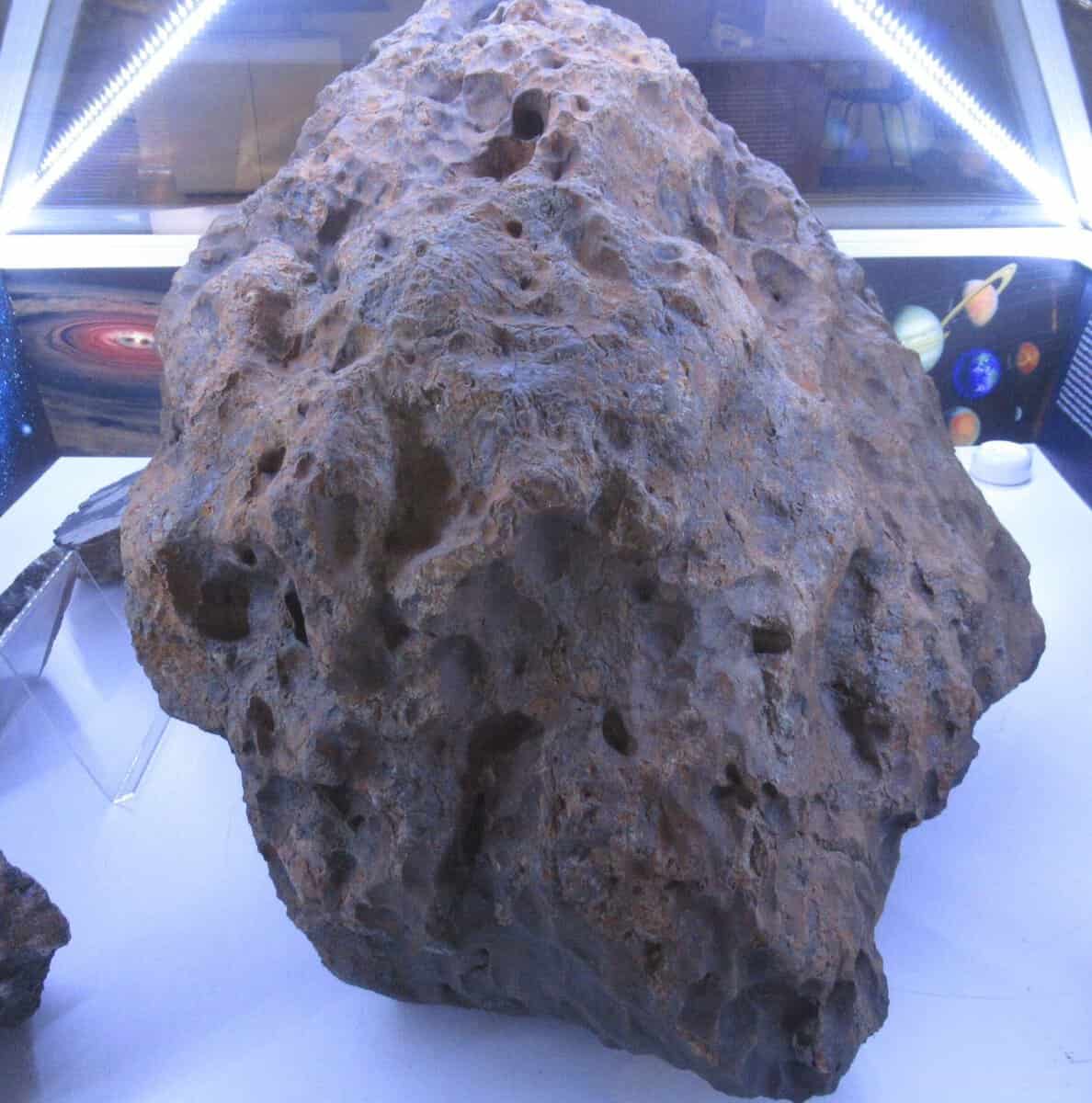
The early morning of February in 2013 turned into a tragic event for the residents of Chelyabinsk and its surrounding areas. The impact of the fallen meteorite affected a record number of people in the history of Earth’s population. The impact wave shattered windows in numerous buildings, uprooted trees, and caused varying degrees of damage to individuals. As a result, approximately 1613 people were recognized as victims, with estimates suggesting that 50 to 100 individuals required hospital treatment. Observers of the meteorite fall were left in awe by the events unfolding before their eyes. Initial speculations ranged from an airplane crash to a rocket malfunction, and some even entertained the idea of an alien attack….
Chelyabinsk inhabitants had the worst luck compared to everyone else

Studio images showcasing the Chelyabinsk meteorite.
Currently, a complete reconstruction of the events from that fateful morning has been accomplished, providing accurate details regarding the time and location of the meteorite’s impact in Chelyabinsk.
The unfolding of the event
Bright flash
According to the U.S. National Aeronautics and Space Administration (NASA), a meteor weighing approximately 10 tons and measuring around 17 meters in diameter entered the Earth’s atmosphere with a velocity of 17 km per second. After 32 seconds, the meteor broke apart into numerous fragments, causing a series of explosions. The initial explosion, which was the most powerful, resulted in a bright flash that lasted for approximately five seconds. Around a minute later, the destructive shockwave reached the Earth’s surface.
Scientists estimate that the destruction of the meteor released energy equivalent to approximately 100 to 500 kilotons of TNT. Although the epicenter of the explosion was not the city of Chelyabinsk itself, it occurred in the neighboring area to the south known as Emanzhelinsk – Yuzhnouralsk.
Locations where fragments descended
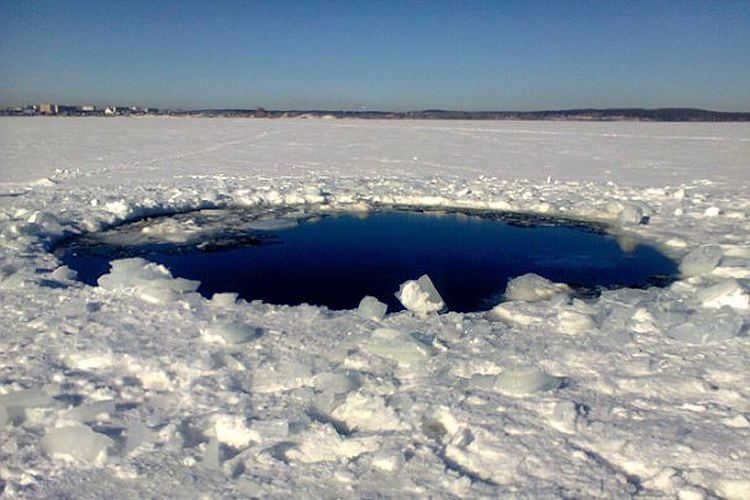
Following an investigation conducted by a dedicated team, four potential locations where fragments of the meteorite may have landed have been discovered. The initial two locations are situated within the Chebarkulsky district of the Chelyabinsk region, the third is located in the Zlatoust district, and the fourth is in the vicinity of Lake Chebarkul. Confirmation that the meteorite is indeed in the lake has been provided by fishermen who were present at the site of impact. According to their accounts, at the moment of impact, a column of water and ice measuring approximately 3-4 meters in height emerged from the lake.
The second largest meteorite after the Tunguska event.
Following the investigation, approximately one hundred pieces of debris were discovered in the Emangelinsk and Travniki areas, with about 3 kg of fragments collected near the lake. These findings are currently under examination by scientists, who believe that the meteorite that impacted Chelyabinsk is the second largest meteorite to have fallen on Russian territory, second only to the Tunguska meteorite that fell on June 30, 1908.
Full video footage from the location
Learn more about the history of the Chelyabinsk meteorite fall: description and characteristics of the object with accompanying photos, impact force, location of impact, size, origin, composition, and age.
In February 15, 2013, the South Ural residents witnessed the dramatic fall of an asteroid. The explosion of this mysterious object caused a spectacle of strange illuminations across the sky. Scientists have spent a year studying this incident and have gathered valuable data on the Chelyabinsk meteorite.
Information about the Chelyabinsk meteorite
A rather typical comet landed in the vicinity of Chelyabinsk. It is not unusual for space objects like this to fall once every hundred years. However, there are reports suggesting that they actually occur more frequently, averaging about five times every century. Scientists believe that comets measuring approximately 10 meters in diameter, which is twice the size of the Chelyabinsk meteorite, enter the Earth’s atmosphere about once a year. However, these events often take place over sparsely populated regions or above oceans. The comets burn up and disintegrate at high altitudes, causing no harm.
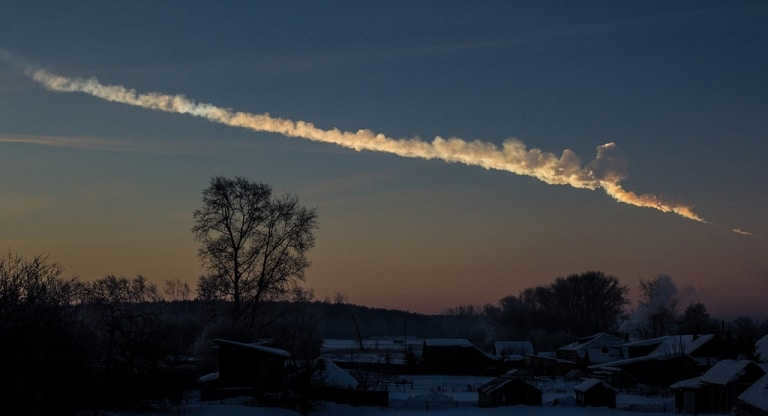
The plume of the Chelyabinsk meteorite was visible in the sky.
Prior to impact, the Chelyabinsk meteorite had a mass ranging from 7,000 to 13,000 tons, with estimated dimensions of 19.8 meters. Upon analysis, scientists determined that only about 0.05% of the initial mass actually reached the Earth’s surface, resulting in a total of 4-6 tons. Currently, just over one ton has been collected, including a large fragment weighing 654 kg that was recovered from the bottom of Chebarkul Lake.
The analysis of Chelyabinsk mayatorite based on geochemical parameters has determined that it falls into the category of ordinary chondrites belonging to the LL5 class. This particular class is the most prevalent subgroup among stony meteorites. Chondrites, which make up approximately 90% of all known meteorites, are so named due to the presence of chondrons – small spherical melted formations measuring 1 mm in diameter.
Data from infrasound stations indicates that during the intense deceleration of the Chelyabinsk aerolite, when it was approximately 90 km above the Earth’s surface, a powerful explosion occurred with a force equivalent to 470-570 kilotons of TNT. This explosion was stronger than 20-30 times the atomic bomb detonated over Hiroshima, but still less powerful than the impact of the Tunguska meteorite (which had an estimated yield of 10 to 50 megatons) by a factor of more than 10.
Aside from causing significant damage, the meteorite fall also yielded positive outcomes. This incident is currently the most well-documented. Additionally, a video camera managed to capture the moment when one of the large fragments of the asteroid fell into Chebarkul Lake.
What is the origin of the Chelyabinsk meteorite?
For scientists, answering this question was not particularly challenging. It originated from the primary asteroid belt in our solar system, which is located between the orbits of Jupiter and Mars. This area contains the majority of small celestial bodies. Some of them, such as the asteroids in the Aton or Apollo groups, have elongated orbits that intersect with the Earth’s orbit.
Thanks to numerous photographs and videos, as well as satellite images that recorded the descent, astronomers have been able to accurately calculate the trajectory of the “Chelyabinsk” meteor. Subsequently, astronomers extrapolated the path of the meteorite beyond the Earth’s atmosphere in the opposite direction to construct a comprehensive orbit of the celestial object.
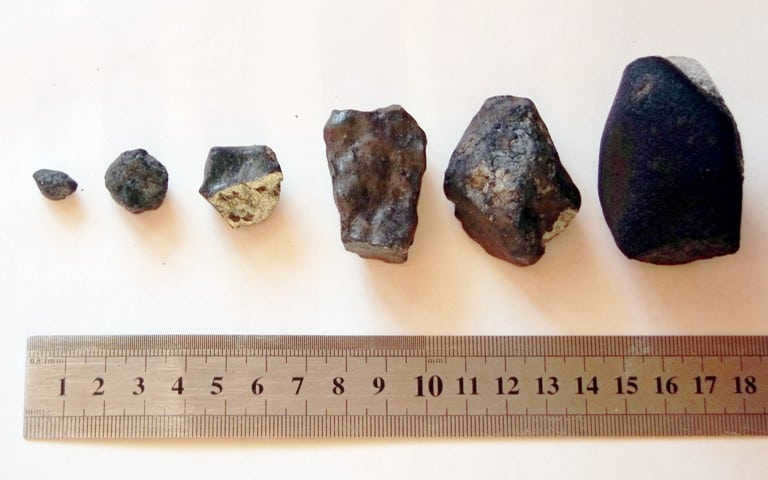
The dimensions of the fragments of the Chelyabinsk meteorite
Prior to impacting the Earth, various groups of astronomers made efforts to determine the trajectory of the Chelyabinsk meteorite. Their calculations revealed that the major semi-major axis of the fallen meteorite’s orbit was approximately 1.76 a.u. (astronomical unit), which is the average radius of Earth’s orbit. The closest point of the orbit to the Sun, known as perihelion, was located at a distance of 0.74 a.u., while the farthest point from the Sun, known as aphelion or apogelion, was situated at 2.6 a.u.
Using these statistics, scientists have been able to conduct a search for the Chelyabinsk meteorite in existing astronomical catalogs that contain records of small celestial objects. It is evident that many of the asteroids previously identified eventually become “lost” and then are “rediscovered” at a later date. Therefore, astronomers have not ruled out the possibility that the fallen meteorite could be one of these “lost” objects.
Although the full similarity in the search was not revealed, astronomers have still managed to identify a number of potential “parents” of the Chelyabinsk asteroid. Scientists Raul and Carlos de la Fluente Marcos from Spain conducted calculations on various orbits of the Chelyabinsk meteorite in order to find its possible predecessor – asteroid 2011 EO40. According to their calculations, it is believed that the Chelyabinsk meteorite broke away from this asteroid approximately 20-40 thousand years ago.
Another team, led by Jiří Borovicka from the Astronomical Institute of the Czech Academy of Sciences, studied the trajectory of the Chelyabinsk meteorite and discovered a striking similarity with the orbit of asteroid 86039 (1999 NC43), which has a size of 2.2 km. For example, both objects have a major semi-major axis of 1.72 and 1.75 a.u., and a perihelion distance of 0.738 and 0.74.
The challenging journey of the Chelyabinsk meteorite
By plummeting onto the Earth’s surface, fragments of the Chelyabinsk meteorite have revealed its fascinating life story. Astonishingly, it has been determined that the Chelyabinsk meteorite is as old as our very own solar system. Through an analysis of the uranium and lead isotopes, scientists have estimated its age to be around 4.45 billion years.
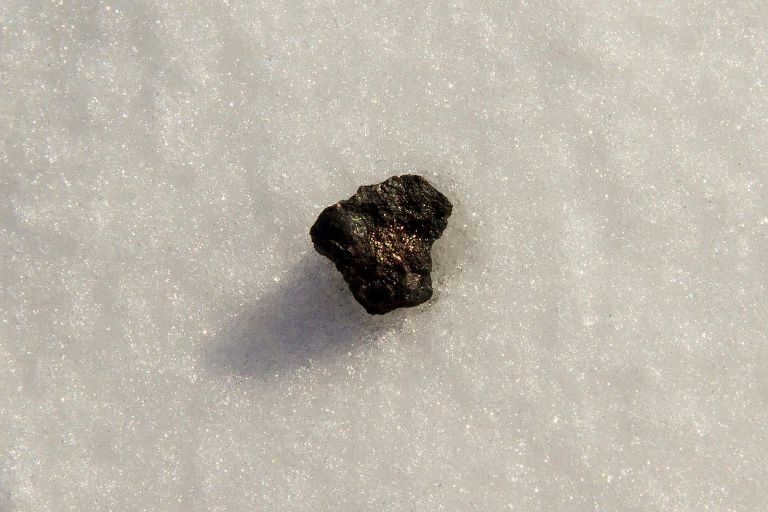

A fragment of the Chelyabinsk meteorite was uncovered at Lake Chebarkul.
The presence of dark streaks within the meteorite’s structure indicates its tumultuous history. These streaks were formed as a result of the intense heat generated during a violent impact, which caused substances to become trapped inside. This suggests that approximately 290 million years ago, this asteroid experienced a powerful collision with another celestial object.
According to researchers from the Gubkin Institute of Geochemistry and Analytical Chemistry, Vernadsky RAS, the collision lasted for several minutes. This is evident from the presence of partially melted iron nuclei, which did not have enough time to completely liquefy.
Simultaneously, researchers from the IGM SB RAS (Institute of Geology and Mineralogy) do not dismiss the possibility that the presence of melting evidence could be attributed to the space object being in excessively close proximity to the Sun.

One could argue that the Chelyabinsk meteorite is the most renowned contemporary cosmic phenomenon. Its descent was witnessed by current residents of Russia and neighboring countries, and the footage of this event became immensely popular on social media platforms. Interestingly, it shattered all previous records for views.
The Chelyabinsk or Chebarkulsky meteorite represents the collision of celestial body fragments, potentially from an asteroid, with the Earth’s surface following its disintegration in the atmosphere. It is theorized that the asteroid fragmented due to deceleration in the atmosphere.
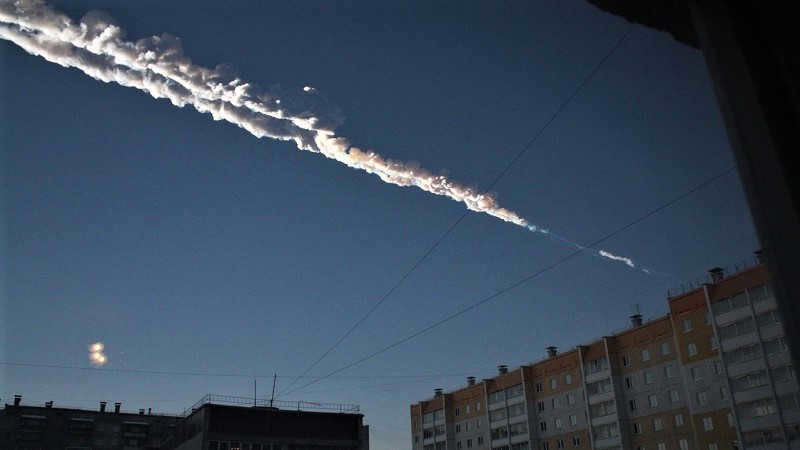
The Chelyabinsk meteorite: when and where did it fall?
So, on February 15, 2013, at approximately 9:20 am local time, the Chelyabinsk meteorite made its dramatic entrance.
Before crashing down, the extraterrestrial superbolide, which means extremely bright, exploded at an altitude of 23.3 km above the city of Chelyabinsk.
The actual impact of the meteorite occurred in Lake Chebarkul, hence its name.

Exploring and Gathering Debris
Despite having advanced technology and monitoring systems for near-Earth space, the asteroid went undetected until it entered the Earth’s atmosphere.
Although a large portion of the meteorite was vaporized and disintegrated upon entering the atmosphere, several fragments of varying sizes managed to reach the Earth’s surface.
Interestingly, the smaller fragments, or meteorites, were only discovered a few days later. This discovery was the result of extensive efforts by scientists, astronomers, geologists, and many others.
Naturally, task forces and expeditions were organized to assess the situation and collect fragments of the celestial object.
The Chelyabinsk region, specifically the Chebarkulsky and Zlatousovsky districts, can be identified as the location where the Chelyabinsk meteorite fell. This is because the first and largest fragments were discovered there. However, fragments of the asteroid were also found in the vicinity of Chelyabinsk, specifically in the Deputatsky, Emangelinsky, and Pervomaysky districts.
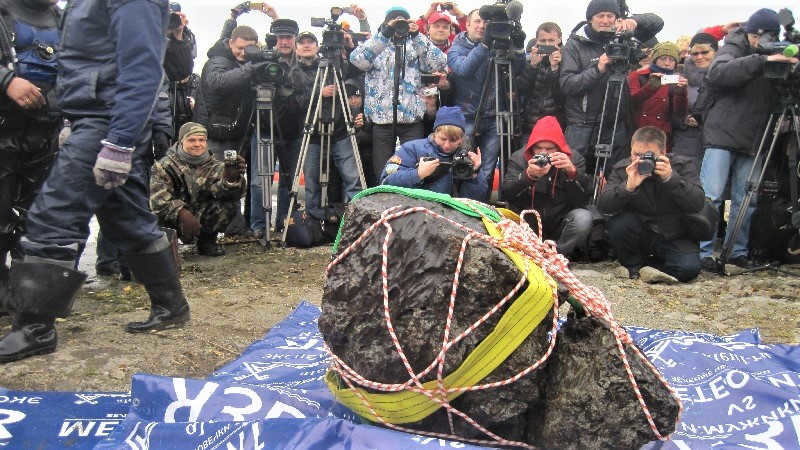
However, the largest fragment weighing 570 kg was lifted from the depths of Lake Chebarkul. Additionally, numerous small specimens were also discovered, collectively weighing several kilograms.
Furthermore, investigations into the impact sites were carried out in the Tyumen region and in Kazakhstan.
Unveiling the truth behind the Chelyabinsk meteorite
Researchers have determined that the Chelyabinsk meteorite entered the Earth’s atmosphere at an extremely steep angle, akin to a rocket. After 32.5 seconds, the meteorite exploded and fragmented into multiple pieces. This event was accompanied by shockwaves that reverberated across the globe.
Following the explosion, a meteor shower rained down upon the impact site.
Based on different calculations, the energy released was roughly equivalent to 440 kilotons of TNT. Excluding the Tunguska event, this is the most significant celestial body that has ever impacted the Earth.
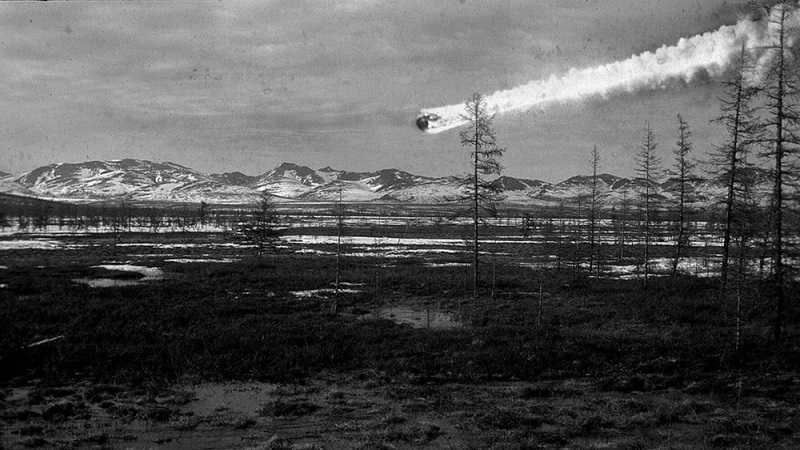
Scientists have determined that the object that visited the Ural region was a small asteroid. Research has shown that the Chelyabinsk meteorite had a diameter of approximately 18 meters and weighed up to 10 thousand tons. Furthermore, its velocity was estimated at 19 km/s.
Interestingly, during its descent, electromagnetic discharges in the atmospheric layers caused audible sounds. This phenomenon is known as an electrophonic bolide. Eyewitnesses reported hearing a hissing sound in the air at the time of the event.
Since the moment of the meteorite’s fall over Chelyabinsk was recorded and observed, it is categorized as a fall based on the detection method.
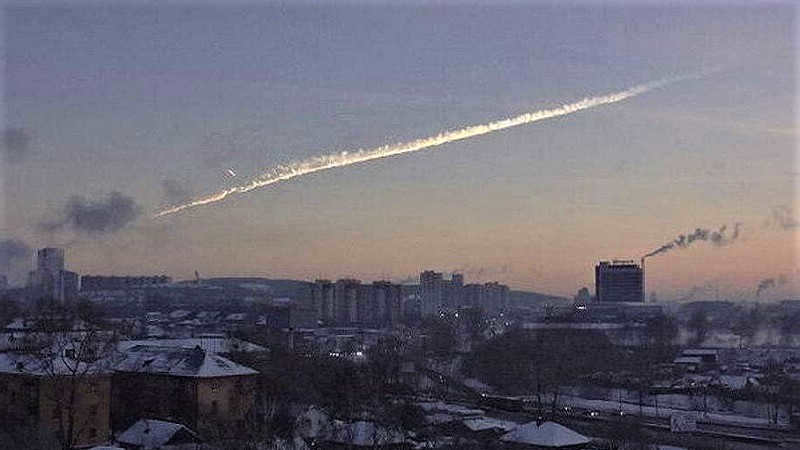
The Historical Museum of the Southern Urals currently houses the largest fragment of the Chelyabinsk meteorite.
The aftermath of the Chelyabinsk meteorite
Regrettably, the impact of this event was significant. A total of 1,615 individuals sustained injuries, primarily due to shattered glass caused by the shockwave. Fortunately, there were no fatalities.
Moreover, numerous buildings and structures suffered damage. In total, the material losses resulting from the Chelyabinsk meteorite, which fell in Chelyabinsk, have been estimated at 1 billion rubles.
Additionally, certain areas of the Chelyabinsk region were under a state of emergency from February 15 to March 5, 2013.
Following the impact of the Chebarkul asteroid, astronomers made note of unusual atmospheric phenomena. For instance, there were reports of sky glow and shimmering silver clouds, reminiscent of the aftermath of the Tunguska event.
Chemical Composition of the Chelyabinsk meteorite
Initial analysis of the Chelyabinsk meteorite revealed that it is a type of stony meteorite known as a common chondrite. Its composition includes metallic iron, olivine, sulfites, and a fusion crust. Additionally, fragments of the meteorite contained unexpected copper nuggets, a feature not commonly found in ordinary LL chondrites. It is noteworthy that these sizable copper inclusions were observed for the first time in meteoritic bodies.
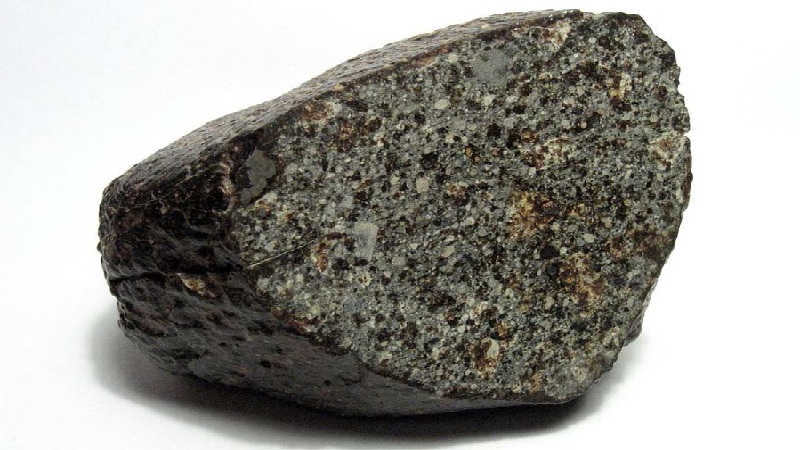
Further examination of the fragmented pieces of the meteorite has confirmed that its mineral composition is indeed similar to that of ordinary chondrites previously discovered. However, the Chelyabinsk meteorite exhibits large cracks that are filled with glass, which contains impurities of silicates and other substances. This glass is primarily composed of the same elements as the fusion crust.
In addition, the fusion crust of the Chelyabinsk meteorite consists of pentlandite, hodlewskite, avaruite, osmium, iridium, platinum, hibbingite, and magnetite.
Scientists have identified the following minerals in the Chelyabinsk meteorite:
- diopside,
- ilmenite,
- kamasite,
- merrillite,
- olivine,
- orthopyroxene,
- plagioclase,
- troilite,
- tenite,
- chromite,
- chislevudite,
- chlorapatite,
- feldspathic glass.
In addition, the Rietveld method was utilized to determine the quantitative composition by mass of the fragment discovered in the vicinity of Deputatsky settlement. This analysis revealed the following percentage distribution of substances within the fragment:
- forsterite ferruginous 37%,
- glass 35%,
- hypersthene 11%,
- albite 8%,
- nickel iron 3%,
- clinohypersthene 2%,
- chromite 1%.
It is possible that the Chelyabinsk meteorite is classified as ordinary chondrites, although there is some uncertainty surrounding this.
Interestingly, the primary material of the meteorite formed approximately 4.5 billion years ago. However, a few thousand years ago, a collision occurred between two celestial bodies, resulting in the formation of internal fractures. These fractures were subsequently filled with molten material, making it difficult to accurately determine the asteroid’s precise age.
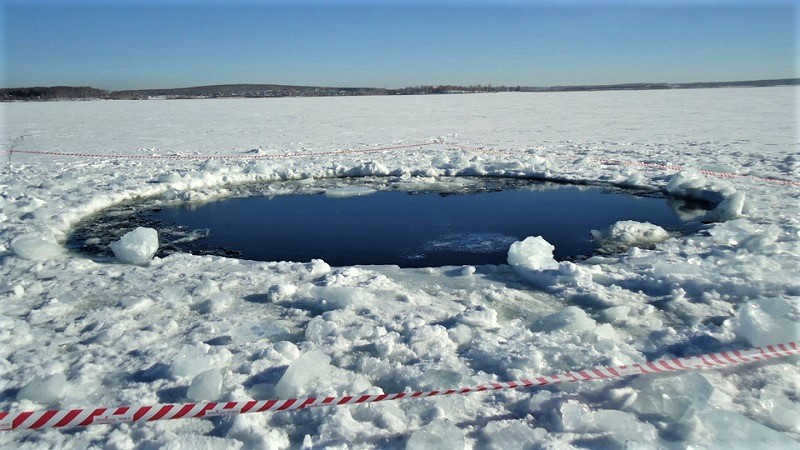
Without a doubt, this extraordinary phenomenon and occurrence has made an enduring impact on the entirety of humanity. It appears that similar incidents take place approximately once every century on average.
You might be taken aback, but numerous individuals refer to this object as quite a typical celestial body. That assertion is very likely accurate. I believe that holds true for the vastness of space or within the vast universe. However, for humankind to witness and calmly observe such celestial journeys is anything but normal, it is not customary, and it is perceived as a peril.
When compared to the Tunguska event, the incident of 2013 has been examined more extensively. As we have made significant advancements in technology and science, the research has delved deeper and become more comprehensive. And most importantly, there is a greater amount of initial data, which has facilitated numerous analyses and verifications.
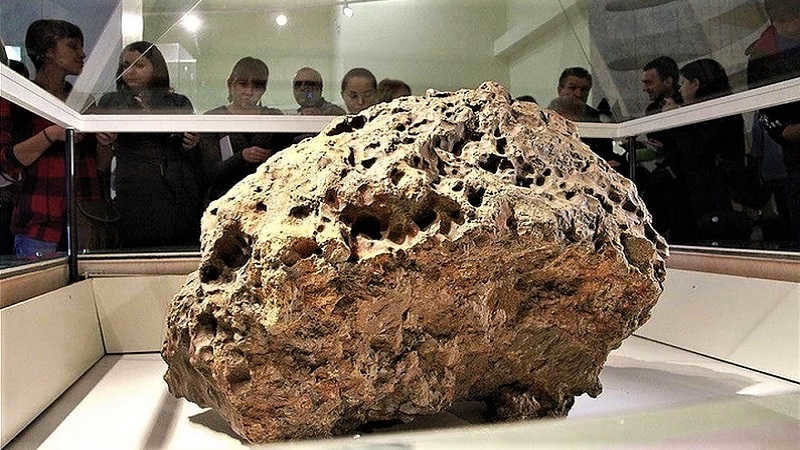
Naturally, every nation on Earth has reached the consensus that there is a need to establish a system that safeguards our planet against such occurrences. Consequently, it is imperative to devise a strategy for shielding against space-related threats, to establish initiatives for the detection and examination of potentially hazardous celestial bodies in close proximity. Furthermore, future plans include conducting experiments aimed at altering the course of such space objects. Unquestionably, these matters hold great significance for our existence on planet Earth.
While the enigma of the Chelyabinsk meteorite remains partially unresolved, we have managed to acquire a wealth of knowledge about it, courtesy of advancements in technology and a deeper comprehension of the world in which we reside.
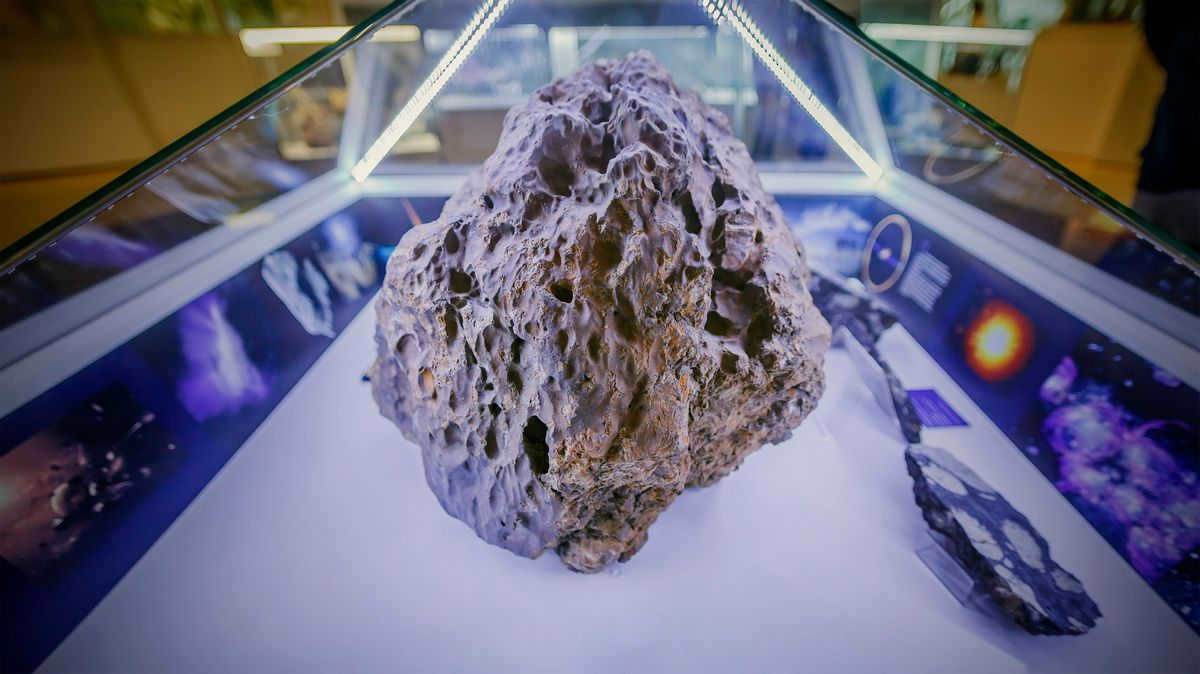
Looking for the famous Chelyabinsk meteorite?
In 2013, a meteorite landed in the Southern Urals. This event gained worldwide attention as there was unprecedented video footage capturing the celestial body’s descent. Fortunately, despite the shattered glass, no human casualties were reported from the resulting shockwave. This extraordinary object quickly became a sensation, attracting visitors from all over who come to Chelyabinsk to witness this extraterrestrial marvel, take photographs, and even make physical contact with it.
How did it happen?
At 9:20 a.m. on February 15, 2013, the Chelyabinsk region witnessed a stunning phenomenon when a brilliant white flash from a fireball illuminated the sky. The condensation trail, similar to those left by airplanes, seemed to split the sky in half. Just moments after the blinding light, a powerful clap resounded, which many people mistook for an explosion. The shockwave shattered windows and doors, and knocked people to the ground. According to scientists, the shockwave traveled twice around the planet. Thankfully, the event eventually came to an end.
The quest to find an unexpected visitor
Prior to its descent into the Earth’s atmosphere, the Chelyabinsk meteorite stood as tall as a six-story building, measuring approximately 20 meters in height and weighing an estimated 13 thousand tons.
Meteorites of this magnitude only make impact on Earth once every century.
Due to the fragility of the meteorite’s composition, it disintegrated into thousands of fragments upon entering the atmosphere, resulting in a debris field spanning approximately 100 km. Consequently, remnants of the celestial body were discovered in the village of Etkul, located 20 km south of Chelyabinsk. The largest fragment, however, descended 85 km east of the regional capital and landed in Lake Chebarkul, earning the meteorite the moniker “Chebarkul meteorite.”

Located near the lake is a memorial stele constructed from marble. The stele is designed in the shape of a lake, with a metal beam running through it to represent the path of a celestial body that once fell there. The precise coordinates and time of the meteorite’s impact are inscribed on the beam. By peering through a designated aperture in the stele, visitors have the opportunity to view the exact spot where the superbolide landed. Additionally, a red-and-white buoy floats on the lake at the site of impact.

Smaller fragments, dispersed across the area, have attracted the attention not only of scientists but also of enthusiasts and collectors, who are interested in rarities such as pieces of meteorites or stones resembling them. These fragments have been traded and transported around the globe.
Suggestion
Therefore, it is advisable to refrain from purchasing “meteorites” from individuals or non-specialized stores. Locals even joke that if you were to gather all the available shards on sale, you would end up with more than one meteorite.
Where to find a meteorite and if it’s possible to purchase a part of it
The primary discovery, along with smaller pieces, has become the focal point of the display at the State Historical Museum of the Southern Urals. These artifacts are kept beneath a sturdy glass dome, where a controlled microclimate is maintained, ensuring a temperature no higher than 18 °C and a humidity level of 50-55%.
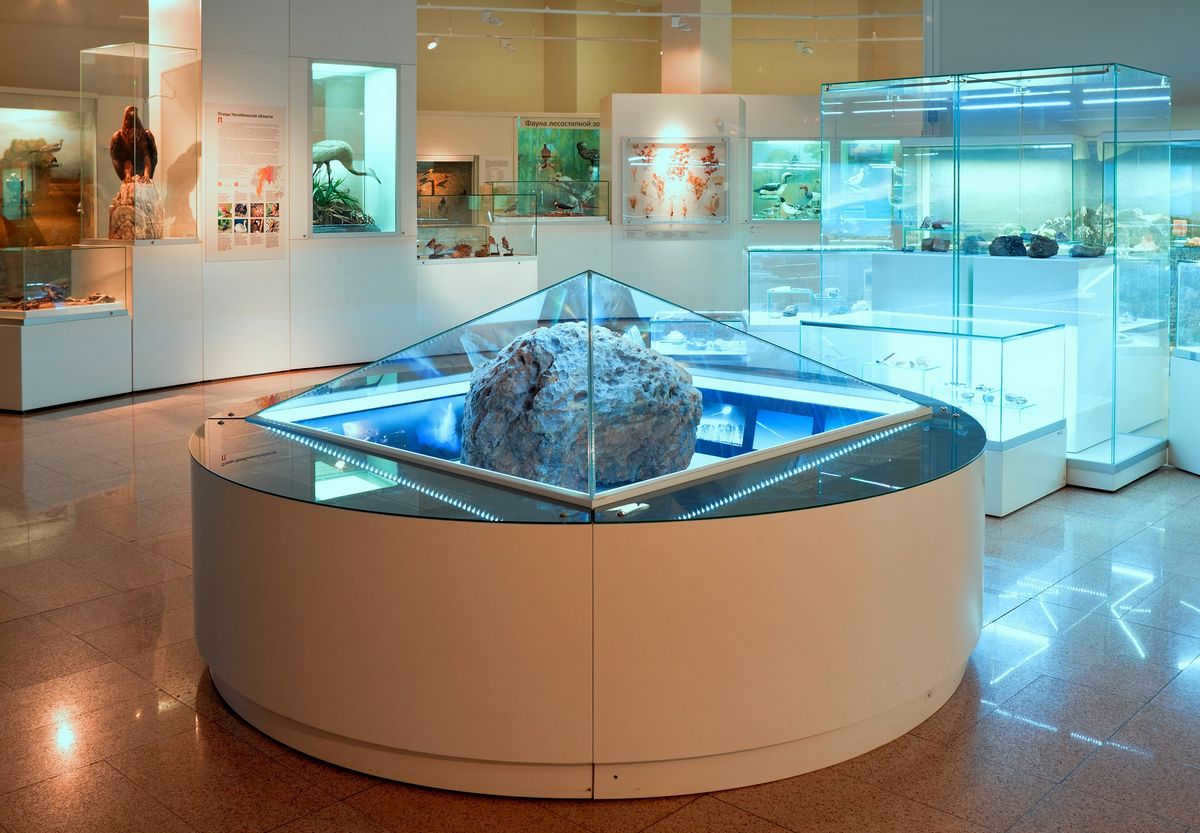
During significant occasions such as the commemoration of the fall, it is permissible to physically interact with the remnants.
To further expand your understanding of celestial entities, we recommend a visit to the Natural Science Museum of the Ilmensky Reserve in Miass. Here, you can compare specimens of the Chelyabinsk meteorite with a diverse range of other mineralogical samples (the museum showcases approximately 9 thousand displays, with a total of around 30 thousand items in its collection).
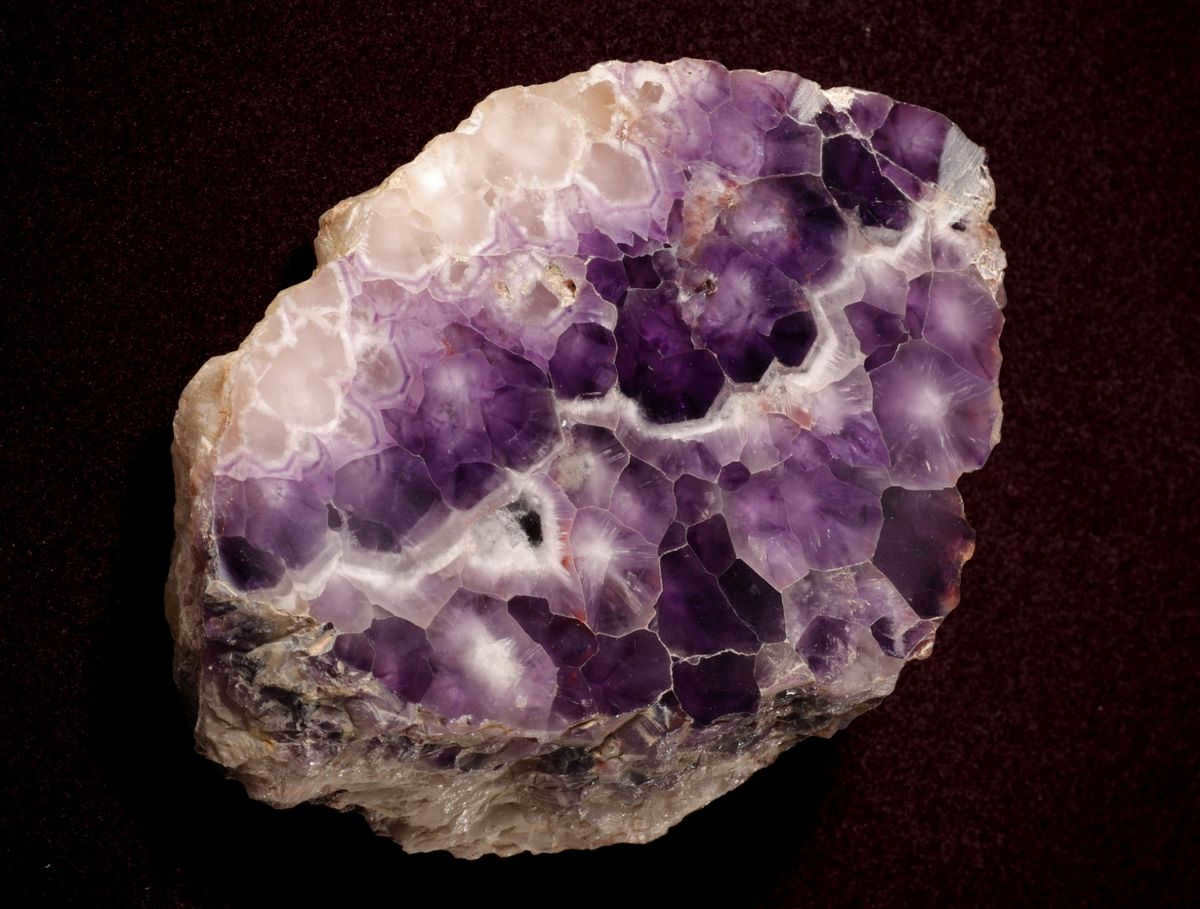
It is of importance to note that there was a small quantity of ilmenite found in the meteorite. Ilmenite is a mineral that was initially found in the Urals, specifically in the Ilmen Mountains. It is interesting to mention that the Ilmen Mountains, now mostly within the boundaries of the Ilmen Reserve, are located just 30-40 kilometers away from Lake Chebarkul.

